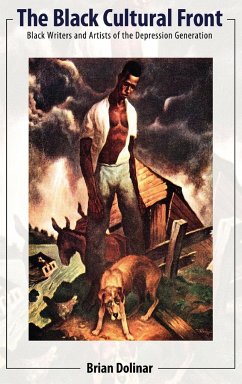How the aftermath of the Great Depression convinced several African American writers to adopt a leftist outlook "Brian Dolinar's The Black Cultural Front is essential reading for students and scholars of the African American Left. Deeply researched and eye-opening, Dolinar brings up challenging questions about the politics of popular culture to provide a rare, ingenious, and powerfully argued reconceptualization of the literary and artistic achievements of three major black radicals." -Alan Wald, H. Chandler Davis Collegiate Professor, University of Michigan The Black Cultural Front describes how the social and political movements that grew out of the Depression facilitated the left turn of several African American artists and writers. This book examines the formation of a black cultural front by looking at the works of poet Langston Hughes, novelist Chester Himes, and cartoonist Ollie Harrington. While none of these writers were card-carrying members of the Communist Party, they all participated in the Left during their careers. Interestingly, they all turned to creating popular culture in order to reach the black masses who were captivated by movies, radio, newspapers, and detective novels. There are chapters on Hughes's "Simple" stories, Himes's detective fiction, and Harrington's "Bootsie" cartoons. Collectively, the experience of these three figures contributes to the story of a "long" movement for African American freedom that flourished during the 1930s, 1940s, and 1950s. Yet this book also stresses the impact that McCarthyism had on dismantling the Black Left and how it affected each individual involved. Each was radicalized at a different moment and for different reasons. Each suffered for their past allegiances, whether fleeing to the haven of the "Black Bank" in Paris or staying home and facing the House Un-American Activities Committee. Yet the lasting influence of the Depression in their work was evident for the rest of their lives. Brian Dolinar teaches in the department of African American studies at the University of Illinois at Urbana-Champaign. His articles have appeared in Langston Hughes Review, Southern Quarterly, and Studies in American Humor.

